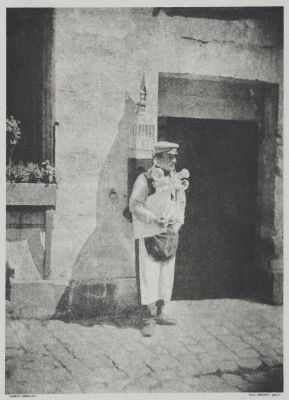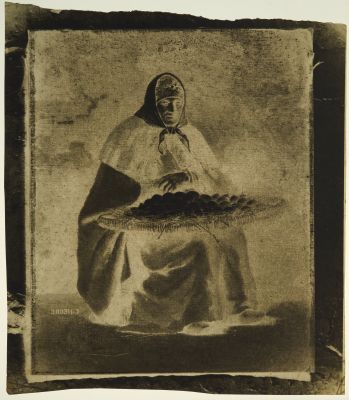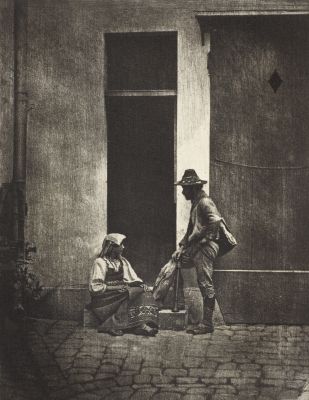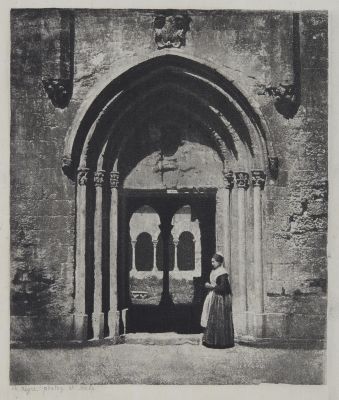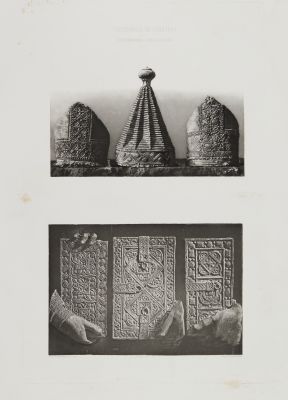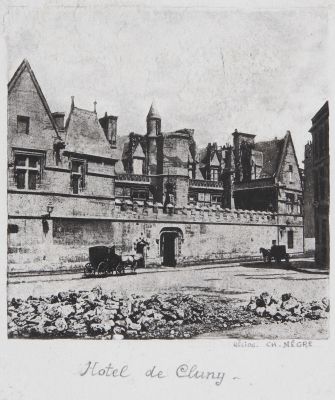
Title
Autoportrait de Charles NègreArtist
Nègre, Charles (French, 1820-1880)Key FigureDate
1984 ca plate (1852 ca negative)Process
PhotogravureAtelier
Pierre Brochet a Beaumont du GatinaisImage Size
29 x 23.2 cmSheet Size
50 x 40 cm
One way in which photographic critics tried to enhance public perception of the medium in the early 1850s was to argue for the creative intelligence of the photographer. In his writing, the critic Ernest Lacan spoke of: the artist photographer, who, having devoted his life to studying of the arts such as painting, architecture, engraving etc., perceived photography as being a new means by which to convey his impressions, to imitate the poetry, the richness and beauty of nature, [and] to reproduce those works of art which human genius has scattered all over the world. He is usually a painter: he is always man of intelligence and talent. Nègre perfectly embodied Lacan’s sentiment. [1]
Pierre Brochet (1922-2016) was a French photographer, printer and educator. He specialized in antiquarian photographic processes and in the early 1980s played a significant role in the revival of photogravure in France. In 1985 Brochet started the L’association pour la photographie ancienne (APA) which specializes in the study and the practice of the antiquarian photographic processes, especially photogravure. Over the course of his career Brochet, in addition to his own work, executed photogravure projects for many institutions including the Musée Carnavalet, Fondation Claude Monet, Centre National Pompidou and from photographs by a whose who of French photographers including Nègre, Atget, Boubat, Puyo, Salgado and many others. Brochet’s atelier was located in his home in Beaumont-du-Gâtinais, France.
Reproduced / Exhibited
Heilbrun, Françoise. Charles Nègre, Photographe: 1820-1880 ; Arles, Musée Réattu, 5.7. – 17.8.1980. Paris: Éd. des musées nationaux, 1980. fig. 9. (calotype)
La Photographie III Collection Marie-Thérese et André Jammes Paris 22 March 2002 Lot 377 (Salt)
Princeton University Art Museum Object Number 2002-403
References
[1] Marien, Mary W. Photography and Its Critics: A Cultural History, 1839-1900. Cambridge: Cambridge University Press, 2011. Print
